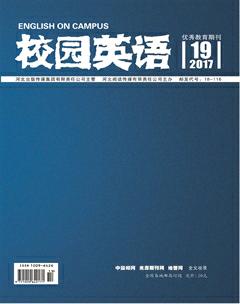Washback Studies Used in Practice Teaching
白育嶺
【Abstract】This paper describes the definition of washback and brief development of washback studies. Based on theoretical frameworks and methodologies of washback study, some suggestions are provided for language testing washback research and language teachers teaching.
【Key words】washback; language teaching
The term “washback” particular refers to the effect or reaction of testing on teaching and learning in the field of education. Linguists hold that washback is the influence that an exam has on the way in which students are taught both positive and negative. It is an important concept in applied linguistics and means the direction of teachers teaching and students learning to some extent.
1. Suggestions in methodologies of washback
Among theoretical studies on washback, its easy to find that there are two major research directions, high-stake examination. In addition, there are three common instruments used in the research: interview, classroom observation and questionnaire. There are three most widely used theoretical models of washback, which are Alderson and Walls washback hypotheses, Hughes PPP washback model and Gus PPPP model. Based on these theoretical frameworks and methodologies of washback study, following are three suggestions of washback research.
First of all, classroom observation is mainly investigates the actual situation of classroom activities. In the process of observation, attention is focused on some variables of classroom activities, such as teachers behavior, students behavior, teachers language and classroom interaction. There are two kinds of classroom observation, pre-observation and post-observation. The pre-observation is based on the research purpose to finds out new questions in order to design interview and questionnaire and ensure the validity. The post-observation mainly focus on whether the subjects behavior could match what they described, and then guarantee the validity of research.
Secondly, inquiry concludes questionnaire and interview in the research. Interview is a kind of qualitative research and has good validity. So based on the interview, the validity of questionnaire could be improved and the results could be generalized. Therefore, questionnaire and interview naturally complement each other and promote research quality improvement. Hence, in the further research of washback, its important to consider validity and reliability of research according to the facts of the situation.
Finally, the subjects of washback research are selected rather than from sampling. Usually, the subjects conclude teaching researchers, test-designers, teachers, students, parents and school authorities. According to the requirement of research, these subjects could be reselected and changed into a more suitable one.
Washback studies generally focus on unintended and indirect consequences of testing. They are usually the function of multiple factors related to the test, context and participants. It is true that investigations on washback are never straightforward because of the involvement of multiple factors.
2. Suggestions for language teachers
A large number of empirical studies reveal that teachers play a vital role in bringing about washback effects, be they positive or negative. Therefore, classroom teachers should be a fundamental component of any collaborative empirical investigations on washback. They play an important role in terms of pedagogical implementations of bringing about positive washback intended by test developers and policy-makers, and expected by students and parents. Following are some suggestions for language teachers.
Language teachers could learn from washback studies and increase awareness of the existence of washback, understand the factors that possibly influence washback, and build up their knowledge of educational theories related to washback. Firstly, teachers need to realize that assessment shapes the curriculum and pedagogy in certain ways, such as teaching-towards-test demands and practicing test-like items in class. Secondly, teachers ought to be aware of those active agents that can influence their teaching and students learning. Thirdly, teachers need to build up and enrich their knowledge of educational theories related to an array of factors of washback.
In the end, washback used in language testing and language teaching can provide better guidance for learners. We could use it scientifically to improve language learning ability.
References:
[1]Bailey,K.M.1996.Working for washback:a review of the washback concept in language testing[J].Language Testing,13(3): 257-279.
[2]亓魯霞.NMET的反撥作用[J].外語教學(xué)與研究,2004(5):357-373.
- 校園英語·上旬的其它文章
- What does a Trump Administration Mean for China?
- The German—Chinese Year of school and youth exchange 2016
- 網(wǎng)絡(luò)社會(huì)下的“民主失控”
- 《理智與情感》與奧斯丁的女性意識(shí)
- 當(dāng)代外國文學(xué)中的新伏都教美學(xué)思想及歷史影響
- An Analysis of the Features of British Culture in the Movie Paddington From Kluckhorn, Kluckhohn and Strodtbeck’s Value Perspective

